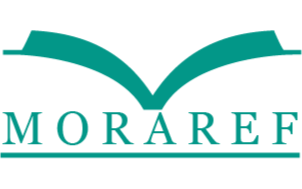PENGEMBANGAN MEDIA PAPAN FLANEL UNTUK MEMFASILITASI KEMAMPUAN KONSEP BILANGAN ANAK PADA KELOMPOK B
DOI:
https://doi.org/10.31004/jpdk.v1i1.362Keywords:
Learning Media, Flannel Board Media, Number ConceptsAbstract
Learning media are the most important part of implementing school learning. A preliminary study in group B of the Cendrawasih I Kindergarten and TK Cendrawasih II found that the use of learning media was used when needed. More practical media used aremarkers whiteboard and blackboardand magazines to convey information related to the concept of numbers. Whereas for early childhood more media is needed which can be used directly to practice concentration and provide new experiences for children. The results of identification and analysis of the problem, researchers followed up by designing flannel board media as a solution in facilitating the ability of the concept of child numbers in group B. In this study using the method of Design Based Research (DBR) developed by Reeves to design, develop, and test feasibility a product to overcome problems in learning. The product is designed using the main ingredients of brown duplex and flannel cloth. The research subjects were teachers and children in group B of Cendrawasih I Kindergarten and TK Cendrawasih II. Data collection is done by interviews, expert validation, teacher assessment, observation of child treatment during product use, and documentation. The product design was declared feasible by the expert validator, then revised according to suggestions and carried out the implementation of the school where the research was conducted. Product implementation was carried out in group B of Cendrawasih I Kindergarten and Group B of TK Cendrawasih II. In general, the product is declared feasible to be used as a learning medium about the concept of numbers based on the teacher's assessment and observations of the child's treatment of the product. Reflections on product development, namely to produce flannel board media to facilitate the ability to conceptualize child numbers in group B.References
Allen, Eileen, K., Marotz Lynn R. (2010). Profil Perkembangan Anak. Pra kelahiran sampai usia 12 tahun.
Anas, M. (2016). Alat Peraga dan Media Pembelajaran. Jakarta: PT. Raja Grafindo Persada.
Herington, J., et. al. (2007). Design-based research and doctoral students: Guidelines for preparing a dissertation proposal.pdf.
Lambke, E., & Foegen, A. (2009). Identifying Early Numeracy Indicators For Kindergarten And First-Grade Students. Learning Disabilities Research & Practice, 24, 12-20.
Lestari KW. (2011). Konsep Matematika untuk Anak Usia Dini. Jakarta: Direktorat Pembinaan Pendidikan Anak Usia Dini.
Nurseto, T. (2011). Membuat media pembelajaran yang menarik. Jurnal Ekonomi & Pendidikan. 8 (1), hlm. 19-35.
Peraturan Menteri Pendidikan Nasional. (2009). Peraturan Menteri Pendidikan Nasional Nomor 58 Tahun 2009 tentang Standar Pendidikan Anak Usia Dini. Jakarta: Depdiknas.
Seefeldt, C. & Wasik, B.A. (2008). Pendidikan Anak Usia Dini Menyiapkan Anak Usia Tiga, Empat, Lima Tahun Masuk Sekolah.Jakarta: PT. Indeks.
Sriningsih, N. (2009). Pembelajaran Matematika Terpadu Untuk Anak Usia Dini. Bandung: Pustaka Sebelas
Sujiono, Yuliani Nurani, dkk. (2008). Metode Pengembangan Kognitif. Jakarta: Universitas Terbuka
Susanto, A. (2014). Perkembangan Anak Usia dini. Jakarta: PT. Kharisma Putra Utama.
Suyadi. (2010). Psikologi Belajar PAUD. Yogyakarta: Pedagogia.
Ulum, I. (2014). Peningkatkan Pemahaman Konsep Bilangan Melalui Permainan Memancing Angka Pada Anak. Yogyakarta: Univesitas Yogyakarta.






.png)










